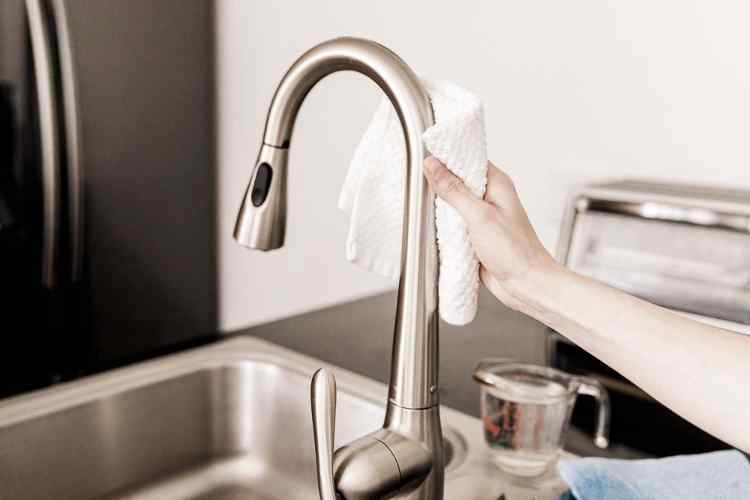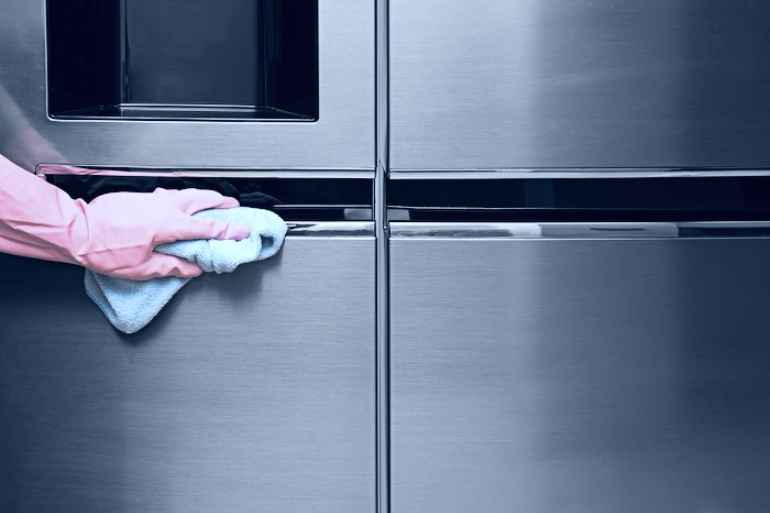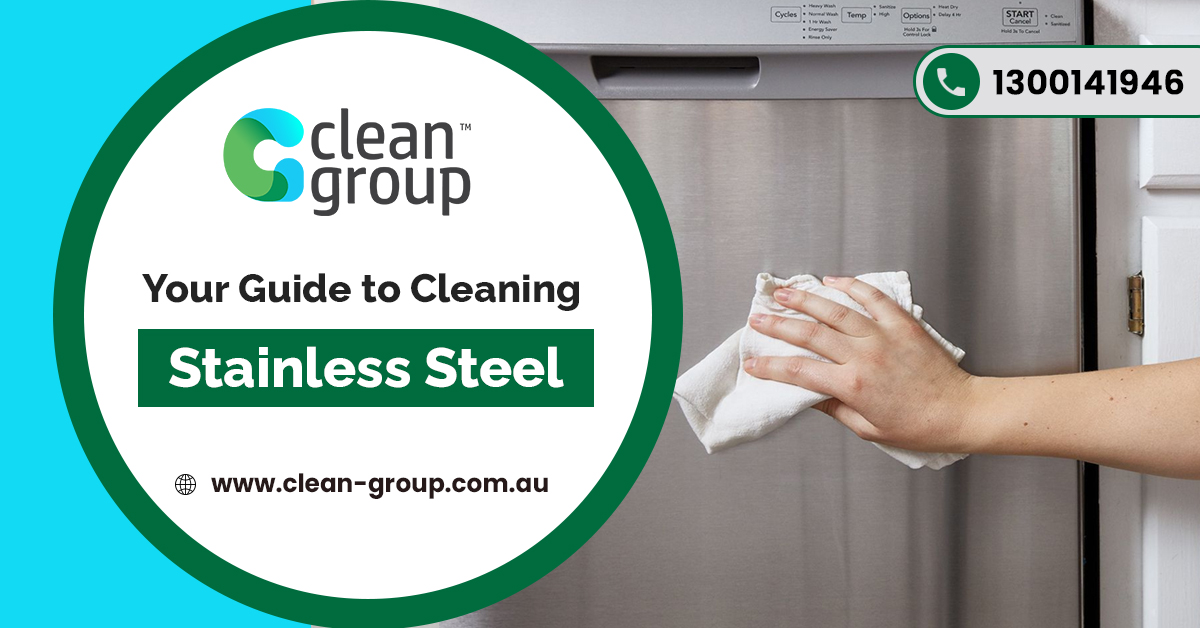Stainless steel has been the standard of quality in kitchens for decades. Furthermore, stainless steel may be found in almost every element of the kitchen, from fridges and ovens to worktables and sinks.
Keep in mind that stainless steel has a smooth, ageless appearance when it is clean. However, it takes cleaner much more effort to clean than any other type of appliance material.
Smudges, fingerprints, stains, and other debris stick to stainless steel. Any interaction with the outside leaves a trace. You must clean it on a regular basis to maintain its beautiful appearance.
If you know, love, and have a lot of stainless-steel appliances, you’re all too familiar with this challenge. We’ve put up this quick guide on the best ways to keep your stainless steel clean so that your appliances can look brand new!
Explaining the ‘Stainless’ Factor
Adding chromium to low-carbon steel was the first-way stainless steel was produced. It became more stain-resistant as a result of this. Steel is now blended with other components such as carbon, nickel, titanium, and iron, making it, even more, stain-resistant.
The purpose of these elements was to protect the top layer from scratching and scraping. There is a newly revealed surface when a scratch appears on the surface.
Furthermore, the combination of materials inside stainless steel assures that the material is going to resist discolouration and corrosion irrespective of how deep the scratch is.
What Are the Advantages of Keeping Stainless Steel Clean?

Maintaining the cleanliness of your stainless-steel items can help with much more than just their appearance. Your stainless-steel appliances can survive years beyond their projected lifespan if you maintain them properly.
With just a few minutes of cleaning each day, you can keep handles, seals, and other critical parts of your appliances, in good operating order.
One of the biggest and best advantages of adding this style to your kitchen is that it can last for years if properly cared for. These gadgets may become a part of your culinary routine for years if properly cared for, saving you money and time in the future.
What Do You Need to Clean Stainless Steel?
Now it’s time to clean. There are a few key procedures to follow to make sure that you’re cleaning your item as thoroughly as possible. You’re going to need the following:
- A microfiber towel
- Vinegar
- A soft cleaning rag
- Your choice of mineral oil
How to Clean Stainless Steel

Make sure to follow the steps below when cleaning your stainless-steel appliances:
- Find the ‘grain’
- Spray vinegar on the appliance
- Wipe the item
- Polish the steel
Find the ‘Grain’
Look more closely at your appliances prior to cleaning. Stainless steel, much like wood, has a grain that can run horizontally or vertically.
It isn’t as noticeable as wood grain; however, it should be visible if you look carefully. Once you’ve found it, you’re going to be able to figure out the direction in which you need to wipe it for the best outcomes.
Spray Vinegar on the Appliance
It is critical to clean stainless steel equipment using vinegar rather than water. Regardless of how hard you scrub, water leaves marks.
Vinegar should be sprayed generously on the surface and left to sit for several minutes. Allowing the vinegar to stay for a few minutes before wiping it off aids in the removal of caked-on or persistent messes.
Wipe the Item
Use a soft cleaning rag to wipe away stains after the vinegar has been set for a while. When washing stainless steel, it’s critical to use paper towels or a soft cloth; this ensures that there are no scratches on the surface. Remove the original dirt and, if necessary, add additional vinegar.
Polish the Steel
Polishing is the best and last step in cleaning any device. Moreover, polishing is essential for achieving the gleaming steel finish you desire in your environment. It also helps to safeguard the appliance between washes.
Dip a corner of the microfiber towel into a small amount of oil to buff the stainless-steel appliances—less is more. Wipe the wet cloth on the appliance and pull it in the direction of the grain. Any streak marks are going to dissolve fast, leaving you with a clean, gleaming surface.
Regular Cleaning
When it comes to deep cleaning stainless steel cooking equipment, follow the steps outlined above. Stainless steel must also be cleaned during a shift. Wash it with soapy water, rinse with regular water, and wipe it with a disinfecting solution for in-between, quick cleanings.
How to Clean Your Stainless-steel Stovetop?
Cleaning stainless steel stovetops does not always necessitate the use of harsh chemicals. In fact, mixtures including bleach or anything abrasive should be avoided because they might cause more harm.
To keep the brushed surface on stainless steel, scrub or wipe with the grain instead of using circular strokes. Remember to put on safety gear and keep the area you’re cleaning adequately ventilated.
Simply follow these steps for light markings and daily care:
- Using hot water and a sponge or cloth, clean the stainless steel.
- If necessary, add a splash of dishwashing liquid.
- You can use this method on your cooking surfaces as well as cutlery.
Why Should You Invest in Stainless Steel?
Stainless steel may bring enormous benefits to your kitchen, despite the fact that it requires regular care. Even in the busier kitchens, this rough and robust surface can withstand damage, staining, and everyday use. Contact the Clean Group today to learn more about the advantages of stainless steel or if you need professional cleaning services.
The Bottom Line
The majority of us have at least one stainless steel appliance in our house, whether the kitchen sink or a saucepan; the mix of utility and an appealing brushed surface makes it ideal for everyday usage. If not properly maintained, the steel can lose its shine, become discoloured, and unclean, despite its name.

